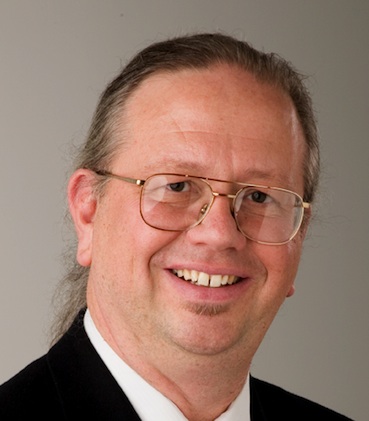Mark Gander to Direct JBL’s Future Technology in the Spirit of its Legacy (Part 3 of 3)

This is Part 3 of a three-part interview. Part 1 |Part 2.
SCN: Where is professional audio going to fit in the "converged" world?
MG: It's a digital world except for the microphones and the loudspeakers, and that's why I love being on the loudspeaker end. Because more and more it's going to reside in the processing, digitally, on the network, and it's all going to be about the control interface, the flat panel or the heads-up screens, but the input transducers and the output transducers are still going to need to convert those bits to sound pressure fields. Or at the front end, convert the sound pressure fields to those bits. Once they're in bits, they can be computed, and processed, and shifted around and wirelessly communicated, so more and more of everything that’s in the middle, right up to the power conversion to drive the output transducer, is going to be digital and perhaps virtual in the mid to far distant future.
But I wouldn’t even say far distant future. More and more of it is going to reside on the network and in the cloud. So the processing, the unique algorithms, the unique displays, the way to handle the data, information, and content, once it comes in and is digitized, is where all the evolution is going to be. Even though I might not be around to work on it in the 10, 20, or 30 years that it may take for this to come to fruition, it’s still going to be a transducer that then has to create the sound field, has to illuminate the audience area with even and constant sound to provide the audio solution, and all of this is going to be similar for video, and similar for the integrated AV solution. It’s going to be the signals that have to be displayed or produced and then to hit our eyes and our ears, is the ultimate output in an audiovisual system, and that is still going to be a three-dimensional problem. How to put up the visual displays and to create the sound fields that maintain the best fidelity and intelligibility in the environments in which humans are still going to be receiving the information.
SCN: What's left for the industry to master in audio?
MG: Interfacing the system with environment. That's the most broad way to discuss it. For me as a loudspeaker guy, that's designing and creating concepts where the loudspeakers are oriented and driven by those digital signals in such a way as we can control the sound field, put the sound at the ears of the audience, and have the highest fidelity possible. But the environment is the most difficult thing. We’re talking about acoustic fields that get generated in frequency and in time in three dimensions, and it's still an incredibly complex problem once the sound has emanated from the sources, however many loudspeakers, however they’re oriented, however the signals to each of the loudspeaker elements are sent, and continuing to evolve that equation so it takes into account the room acoustics and the positions in the audience. There’s so much work to be done in that area, in terms of the DSP and the processing, the algorithms, and in terms of ways to physically mount and orient the transducers in order to achieve that.
But I think it also applies in terms of the visual and the video as well. The visual people have the same kind of challenges in terms of size and positioning of displays, dealing with the latency problems in coordinating the sound, which travels so much slower than the photons in the light does. It’s those environmental interface issues that interface the output of our AV systems with the eyes and ears of the users, the receivers, the customers, the audience.
A daily selection of the top stories for AV integrators, resellers and consultants. Sign up below.
SCN: Is there any hope that architects will ever really care about audio and acoustics?
MG: It's a constant struggle to remind them, because they're trying to build beautiful and functional spaces, and it's a constant tug of war between what will visually inspire the person who’s experiencing the environment compared to what is necessary to create a functional environment where visually and acoustically the sights and sound can be properly perceived and the message is not garbled by difficulties with the environment.
As with a lot of things, it's about education, it’s constantly educating, trying to make better solutions and more elegant solutions that are smaller that are less obtrusive. And as we get more sophisticated, there are ways to make the speakers smaller and less obtrusive, to hide them through beam steering or other methods, get the sound to where you need it to go.
But it’s also a constant attempt at communication and education, so there’s more sensitivity to the importance of making the environment work in terms for its intended purpose of communications. We’re trying to serve both ends, both the beautiful architecture and the hopefully more than merely satisfactory acoustic environment.
